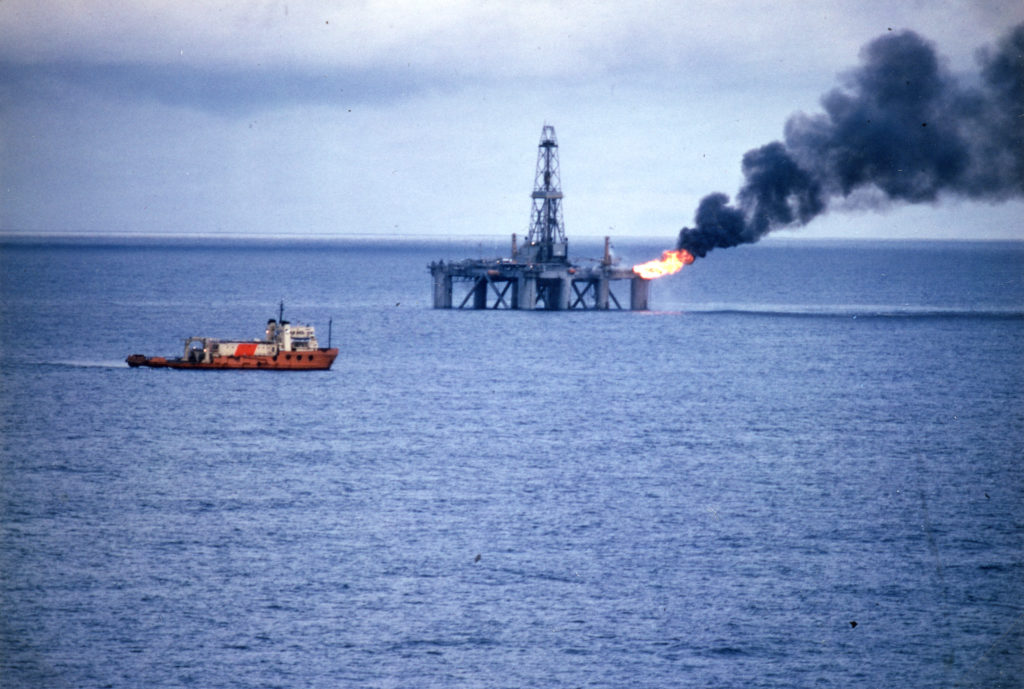Fast find

When the eighth round awards were announced on 9 March 1984, Shell found itself operating PL 093 – known today as Draugen – with Statoil and BP as its partners.
 draugen under vann, engelsk,
draugen under vann, engelsk,No time was wasted. As early as 26 June, the Borgny Dolphin drilling rig had spudded the first wildcat on this acreage – which proved an immediate success.
The main purpose of the well was to investigate and assess a possible reservoir in formations deposited during the early or middle Jurassic.
This geological period began some 200 million years before the present day and lasted about 50 million years. Even deeper strata would also be probed for oil and gas.
Unfortunately, the well path started to deviate at a relatively early stage in the drilling and the work had to start again from scratch a few days later.
The first trace of oil was found at a depth of 1 621 metres beneath the seabed, and the well penetrated the oil-water contact at 1 660 metres.
That confirmed the picture of the sub-surface which had been formed a few years earlier from studying seismic images. These gave a strong – and justified – hope of finding big oil resources.
An oil column of 40 metres, which was later confirmed in the well, is normally a sign of a good reservoir.
Drilling continued right down to a depth of 2 500 metres into rocks from the Triassic period, which lasted from 250 to 200 million years ago.
The well was plugged and abandoned on 7 September, after extensive testing[REMOVE]Fotnote: Norwegian Petroleum Directorate, fact pages.. Carried out in a six-metre zone roughly in the middle of the oil column, a production test yielded good indications of oil with outstanding properties.
So the Draugen field was discovered just six months after the acreage had been awarded.
Production licence awardedBoycott which backfired